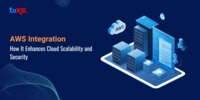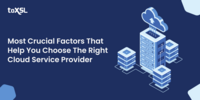- May 24, 2024
Share this post on:
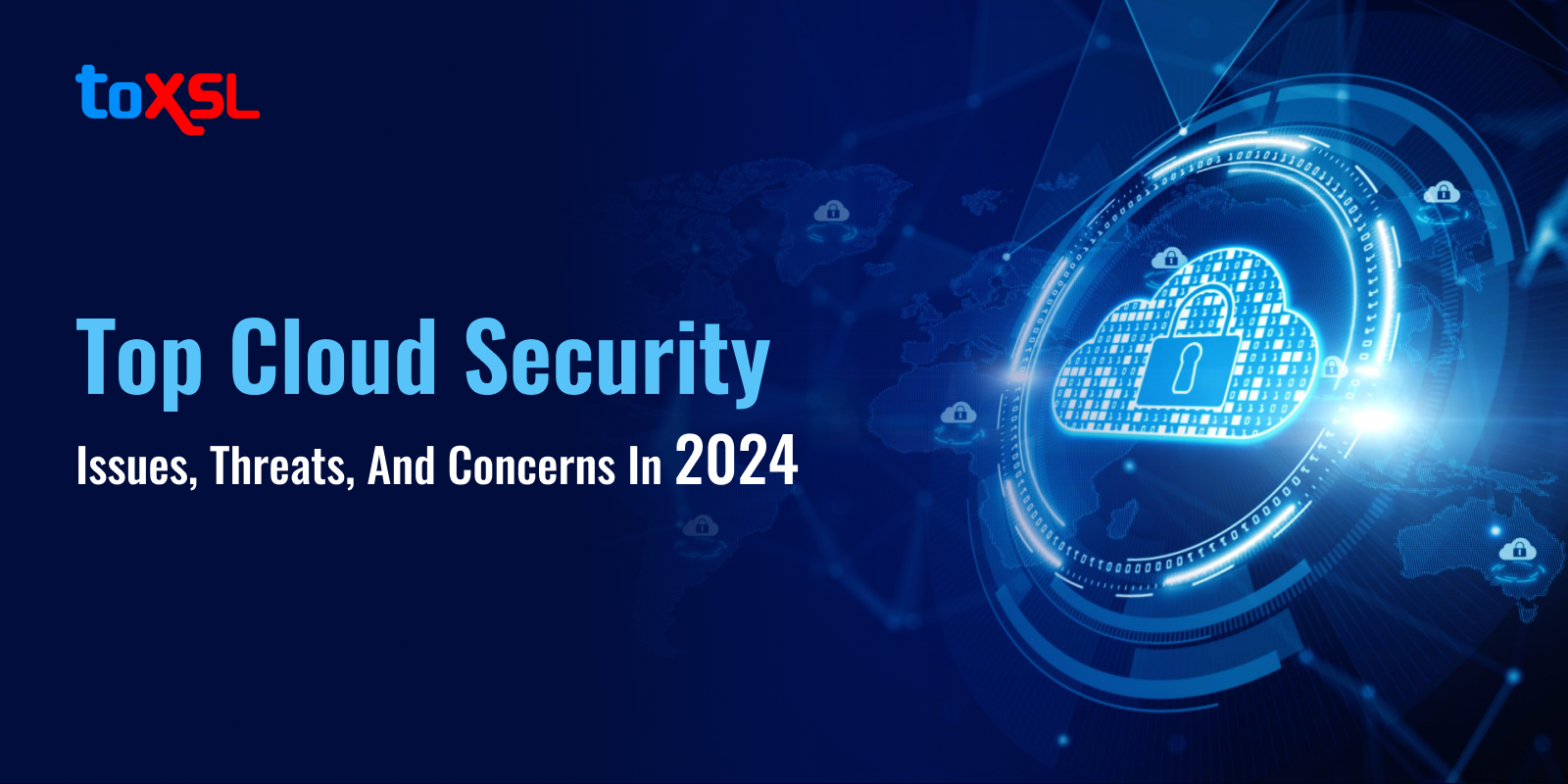
With the rise of cloud services in the business market, cloud security has become the most crucial aspect to consider. Nowadays, more and more businesses are moving to the cloud, giving rise to cyberattacks.
An important thing to note is that the cloud is not inherently insecure. These are highly secure and prone to hacking like any other IT environment. Cloud breaches can cost businesses millions of dollars.
In January 2021, the World Economic Forum listed financial crises as one of the biggest threats that the world will witness in the next decade. So to scale a business, cloud security has become one of the essential elements that cannot be ignored. Before moving ahead in this article, let us check what the statistics have to say.
- 69% of businesses said that they are experiencing data breaches or are at risk.
- 82% of organizations see cloud security as their biggest challenge.
- As per an IBM report, data breach costs businesses approximately $4.35.
- 82% of data breaches involve malicious attacks and abuse.
- 89% of startups were affected by cloud security incidents.
- 25% of businesses suffered undetected cloud breaches.
Cloud security issues and Threats in 2024
Every business is moving towards cloud computing. With the fast adoption of cloud services, it is crucial to know the organization’s cloud security issues and threats.

- Misconfiguration: 15% of initial attacks take place due to cloud misconfiguration. Sometimes, it can occur due to internal mistakes. Misconfiguration of cloud security is considered one of the leading issues in data breaches. Numerous factors are associated with misconfiguration. Cloud infrastructure is structured in a way that is easy to use, understand, and share data. It can make it difficult for organizations to ensure that data is accessible only to authorized parties.
- Unauthorized access: The organization’s cloud-based deployment is outside the network boundaries and is directly reachable from the public internet. This public access makes it easier for hackers to attack business systems. The main reason for such access was improperly configured security and compromised credentials.
- Account hijacking: When the passwords are weak or have been used many times. Such instances where the passwords are not strong are more likely to be impacted by phishing attacks and data breaches. This is one of the most serious cloud security issues faced by organizations. Furthermore, organizations find it hard to identify and respond to such threats when they are in the cloud.
- Lack of visibility: The infrastructure used by a company’s cloud-based resources is not part of a corporate network. As a result, many conventional methods for attaining network visibility are ineffective in cloud environments. Due to this, it becomes more difficult for organizations to monitor and protect their cloud-based resources.
- External sharing of data: Even though the cloud makes data sharing easy, many clouds offer the option to explicitly share invitation links or emails with the collaborator, enabling anyone who has the link to access the data. And this has become another major issue for businesses, as the link can get stolen or be forwarded to someone with the wrong intentions.
- Malicious insiders: Insider threats pose a significant challenge to cloud security. This type of threat occurs when individuals such as employees, contractors, and third-party partners with authorized access to cloud resources intentionally compromise cloud security, leading to data breaches, loss of data, and intellectual property theft.
- Cyberattacks: Cybercriminals select their target based on the profitability of their attacks. The public can directly access the cloud-based infrastructure from the public internet. It happens when companies handle their cloud improperly. In such cases, hackers tend to attack the cloud used by companies.
- Denial of Service attacks: The cloud is essential for businesses as it can store critical data and run important applications. It means a Denial of Service (DoS) attack can affect many organizations and cause data loss.
Top tips to mitigate cloud security threats
According to a cloud security report, 27% of businesses find cloud apps less secure.
Let us discuss tips that help businesses mitigate cloud security threats.
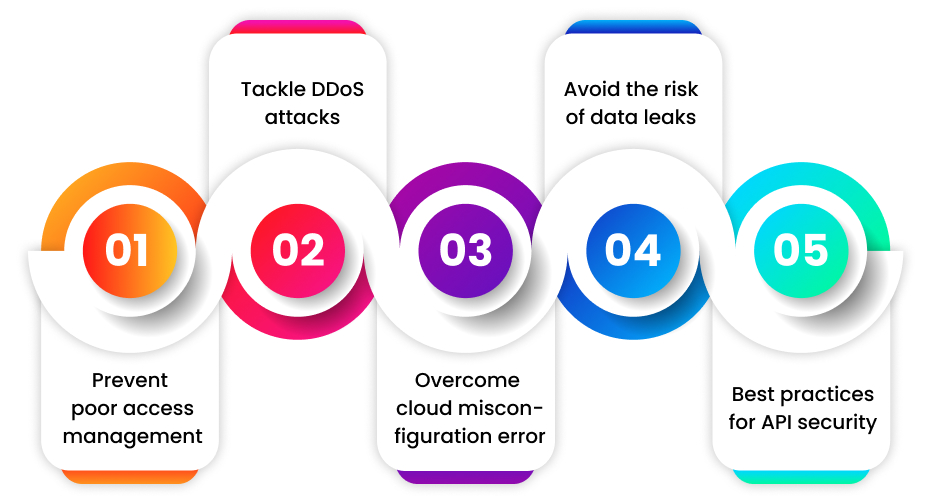
- Prevent poor access management: Developing a governance framework for all user accounts is a form of good access management. Ensure that all user accounts are connected to the central directory services. Moreover, businesses can use third-party security tools to pull lists of users, groups, and roles that can be sorted with the help of your security team.
- Tackle DDoS attacks: DDoS (Distributed Denial of Attack) is damaging, so having an excess of bandwidth is crucial. Moreover, look for vulnerabilities in your business system. It is good to scan your network and business systems to determine your vulnerabilities. You can use online tools to find business vulnerabilities. Furthermore, keep a backup internet connection with a different pool of IP addresses. Keeping a backup can help businesses in numerous ways.
- Overcome cloud misconfiguration error: It is crucial to understand and know your cloud well to mitigate the issues of cloud misconfiguration. Understand and modify credentials, and set up multi-factor authentication to ensure security. Also, it is mandatory to audit your cloud and configure the settings. Monitoring and auditing properly can help you identify misconfigurations.
- Avoid the risk of data leaks: By encrypting data, businesses can avoid the risk of data leaks. Ensure not to keep data in the cloud without encryption. With that, it is crucial to keep changing and choosing smart passwords. Additionally, assign permissions based on authenticity.
- Best practices for API security: APIs are designed with tokens, signatures, quotes, encryption, and API gateways to maintain security. So it is mandatory to follow authentication and authorization policies. Also, apply web app firewalls to ensure extra security. Choose a standard API framework, check its security aspects, and decide whether it is secure or not to integrate third-party apps.
Cloud security concern in 2024
Here are a few cloud security concerns that businesses must know:
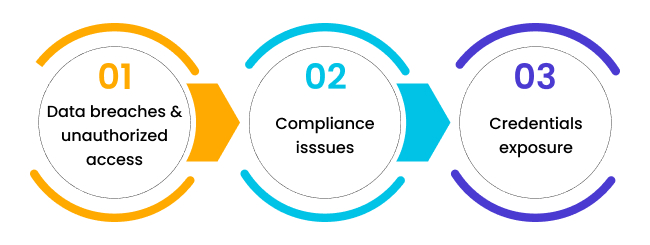
- Data breaches and unauthorized access: Data breaches and unauthorized access are two of the most significant security threats that the cloud might face in 2024. It can happen in various ways, such as through hacking, phishing, or ransomware attacks. While cloud providers are implementing various security protocols to prevent these incidents from happening, hackers and cybercriminals are changing their tactics.
Cloud providers must implement multi-factor authentication devices and security monitoring tools to mitigate data breaches and unauthorized access. It will monitor user activities and identify suspicious behavior, alerting the security team. Also, encryption technologies must be implemented to encrypt sensitive information, rendering it useless if stolen by attackers.
- Compliance issues: Cloud users are often concerned with compliance and regulatory issues. Compliance allows cloud providers to report any data breaches or violations. Failing to meet these regulations can result in fines or legal action that can damage the cloud provider's reputation. So cloud providers must continuously review regulatory requirements and modify their security practices to maintain compliance. It includes implementing regular training, efficient data management processes, and disaster recovery plans.
- Credentials exposure: With the growing demand for cloud-based services, people are used to receiving emails where they are asked to put their credentials. This makes it convenient for cybercriminals to know employees’ credentials for cloud services and misuse them. Because of that, accidental exposure to cloud credentials has become a major concern among organizations.
Advanced Cloud Security Challenges
Cloud computing opens up new opportunities for organizations, offering unique challenges for securing sensitive data in a cloud environment. Cloud security is an ongoing challenge that requires constant investment in technologies and processes. The challenges listed above must be addressed to ensure that cloud infrastructure, applications, and data are secure from unauthorized access, modification, or deletion.
Here are a few advanced cloud security challenges that businesses face:
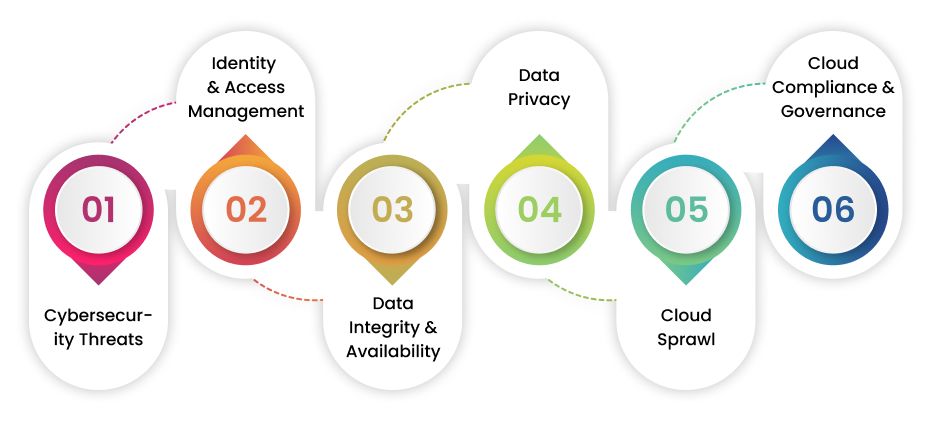
- Cybersecurity Threats: Cybersecurity threats are one of the biggest challenges in cloud security. Cybercriminals seek to attack cloud infrastructure, applications, and data to acquire sensitive information or disrupt operations. Cloud providers use security measures such as firewalls, intrusion detection and prevention systems, and antivirus software to mitigate these threats. However, cybersecurity threats continue to evolve, and consumers must remain vigilant about securing their data in the cloud.
- Identity and Access Management: Identity and Access Management (IAM) is a critical component of cloud security. IAM encompasses authentication, authorization, and auditing, which need to be managed effectively to avoid security breaches.
- Data Integrity and Availability: Data integrity is a critical aspect of cloud security. The data must be authentic and trustworthy, which is crucial for sectors like healthcare, finance, and government. Ensuring that data is available and accessible at all times is also an ongoing challenge, as cloud infrastructure can sometimes fail, which can result in downtime.
- Data Privacy: Data privacy is a major concern for organizations contemplating a move to the cloud. The sensitive information stored in the cloud is secured from unauthorized access, modification, or deletion. Cloud consumers must ensure that their data is accessible only to authorized personnel and that access controls are regularly reviewed and updated.
- Cloud Sprawl: Cloud sprawl is when users spin up cloud resources without proper authorization or oversight. This phenomenon has become standard with the rapid adoption of cloud services. The challenge of cloud sprawl is that it can compromise security, increase costs, and hinder performance. To mitigate cloud sprawl, ensure that resources are managed appropriately.
- Cloud compliance and governance: Cloud computing has made it easier for businesses to operate globally. However, various countries have different regulations related to data privacy, cybersecurity, and compliance. Cloud providers must be compliant with these regulations, and consumers must ensure that their providers comply with regulations in the countries where their data is stored and processed.
Wrapping-up:
Cloud security is crucial for companies that rely on cloud computing to stay competitive. It helps guard against security breaches and misconfigurations due to a lack of knowledge of cloud security.
Also, cloud security helps manage remote work and ensure disaster recovery. A secure cloud helps with data recovery by keeping the data backed up.
Finally, cloud security involves principles, methodologies, and technologies to reduce the risks associated with cloud computing. Organizations need cloud security measures to address external and internal threats to business security.
So, if you are finding the best cloud services, contact us now.
We at ToXSL, offer the most innovative and secure cloud services. We follow strict security measures to keep security threats away from your business. To learn more, contact us.









